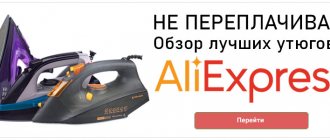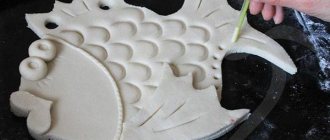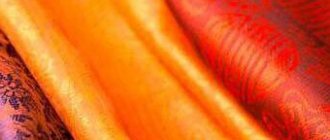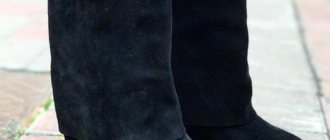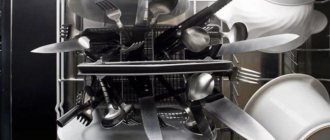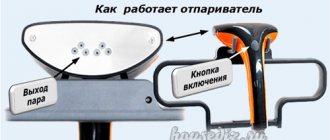Iron or steamer? A similar question arises when the old device is no longer satisfactory or has broken down, and it’s time to buy something new. An iron is an important appliance for the home; you can’t hesitate to buy it. Therefore, let's quickly figure out whether you should choose an iron with a steam generator or a steamer for your home.
To do this, we will explore the features of one and the other, and at the end we will tell you what to look for when buying. All you have to do is decide what is best for you.
Design and operating principles of ironing equipment
To better understand the functionality of the iron and steamer, you should first study their structure in order to understand how they work.
The design and principle of operation of the iron
The design of the iron is determined by its model: from the simplest to the option with a steam generator and wireless devices. The ironing part of the iron is the sole, which in budget equipment is made of steel or aluminum, and in more expensive irons it is coated with ceramic or Teflon. The soles of the irons have holes for steam supply. A tubular electric heater (TEH) passes inside the sole.
Heating is regulated by a thermostat, which turns off the heating when the set temperature is reached, resuming it when the sole cools down. In wired models, power is supplied from the network through a wire connected to the contacts inside the iron.
There is also a power indicator and a water tank with a water nozzle outlet for steam and water spray. The body is made of transparent plastic to visually control the water level in the tank. And the handle is equipped with a rubberized insert to prevent slipping.
The iron works like this:
- after connecting to the network, the heating element heats up;
- heating of the heating element is regulated by a thermostat, the plates of which at a certain temperature change shape and open the circuit, stopping the current supply;
- when the thermostat plates cool down, they return to their previous shape, the circuit is closed again, and the current supply is resumed;
- the cycle is repeated throughout the ironing time;
- if the iron model has a water reservoir, you can press the steam release valve so that the water from the reservoir passes along the heating element and heats up until steam is formed;
- after which, for better ironing quality, steam under low pressure is supplied through holes in the soleplate and the outlet of the steam nozzle.
The design and principle of operation of the steamer
Steamers are available in floor, vertical and hand-held types. Classic models have a water boiler tank with an electric heater. There is a built-in thermostat to protect against overheating. Power is supplied from the mains.
The reservoir is placed in a housing on which there are indicators and power regulators or a control panel. From the reservoir, steam from the boiled water flows into the steam hose and into the iron. The iron can be made of plastic, metal or ceramic.
Clothes are placed on hangers, which are located on a telescopic, height-adjustable stand. The stand is built into the body of the steamer.
Some models are equipped with an iron heater to prevent condensation from leaking out. The kit may also contain additional items: a thermal mitten, clips, brushes for clothes, etc.
Manual models do not have a hose or stand. The steam immediately enters the iron attached to the tank body.
Here's how steamers work:
- after power is supplied, the water in the boiler is heated by the heating element and boils;
- in gravity models, steam from boiling water is continuously supplied through a steam hose (or without a hose, directly in manual models) into the iron under low pressure;
- in devices operating at high pressure, steam accumulates in the reservoir, the pressure increases, and steam is supplied to the iron in portions under high pressure;
- The thermostat protects the device from overheating by stopping the heating of the heater when a certain temperature is reached.
Iron with steam generator
A wide selection of irons allows you to choose a device to suit every taste:
- with a narrow sole and holes on the nose - for clothes with a lot of details;
- with a wide sole, rounded at the back - for bedding, tablecloths and the like;
- miniature - for travel;
- with constant steam supply - for quickly smoothing delicate fabric;
- with a boost of steam - to remove unruly folds from linen or cotton.
In irons, the water is heated by a heating element located in the sole. To make it boil, you need to turn on the device at maximum power, and when steam comes out, set the heat regulator to the type of fabric you are going to iron.
In addition to steaming, many models have a sprinkler on the spout to soften the most unruly folds on things with droplets of water. The wire connecting the iron to the network is sometimes removed, which allows the iron to work autonomously for some time at any distance from the outlet. This is especially true when you need to steam hanging curtains.
But some inconveniences are still present in electric irons, otherwise steam generators would not have been created.
- The high initial temperature of the sole often causes things made from synthetic fabrics to burn.
- Manufacturers do not always equip irons with a cord of sufficient length for comfortable ironing.
- The volume of the water tank is 200-300 ml, maximum 400 ml.
- The time you can use steam is limited by the volume of the tank: you don’t always have time to iron all your clothes.
- The steam pressure on the fabric leaves much to be desired: the iron does not always cope with overdried shirts made from natural materials. You have to make an effort to straighten the fabric.
- Filled with water, the device weighs a lot.
- Your hand gets tired because you first need to lift the heavy iron and then press harder on the fabric.
Despite the shortcomings, the main advantage of the electric iron is its price. This makes him an indispensable assistant in the household.
Where is better vertical steaming?
In terms of vertical steaming capabilities, the iron is inferior to even a simple hand steamer. There are several reasons.
- Convenience. When the tank is full during vertical steaming, holding the iron in your hand for a long time is difficult and uncomfortable, but the iron of a classic steamer or a small hand-held model fits easily in your hand. They are easier to maneuver.
- Availability of a stand. Floor-standing and vertical steamers are equipped with a built-in rack with clothes hangers, so there is no need to look for a hanger and additional space for steaming.
- Continuous steam function. This feature is provided in almost all steamers: you don’t need to press anything extra, steam comes out constantly. And when steaming with an iron, you will have to press the steam button each time and wait for it to warm up to the desired temperature again.
- Different steam speeds. The higher it is, the more effective the ironing.
Irons have a maximum steam output of about 50-70 g/min. And for classic steamers this figure is 70-90 g/min, and up to 140-200 g/min for more powerful models.
Can a steamer replace an iron?
The answer to the most important question, whether to buy a steamer instead of an iron, depends on what you use the iron for most often.
- If you have to show up at the office every day in a formal suit, and your children at school are required to wear formal clothing, then you definitely have something to iron. There is no question as to whether it is more convenient to iron shirts, a steam generator or a steamer. The steam generator will handle it faster, and less energy will be spent. What remains is the price.
- When there is nothing special to iron, there is no point in spending money on buying a state-of-the-art unit: it will simply gather dust without use. Modern irons with a built-in water tank can handle a couple of shirts and trousers. And new technologies for supplying and distributing steam will delight you with the device’s ability to smooth out wrinkles.
- If your work involves business trips, and you have a family waiting at home, then you don’t have to choose between an iron or a clothes steamer, but make a smart move: for the family - a steam generator, for trips - a small steam iron. And everyone will win.
In general, a steam generator can successfully replace an iron almost always, except when traveling.
Hair straightener
Using hair curlers is a simple and affordable way to restore a locally wrinkled shirt, collar or cuffs, straighten creases on trousers, straighten a tie and eliminate wrinkles on a skirt. Heat the device to a temperature appropriate for the type of fabric or set it to medium mode. Press the problem area between the plates and hold for 2-3 seconds. Repeat if necessary.
Advice! Before use, thoroughly wipe the contact surface of the curling iron to remove any remaining styling products to avoid stains.
Ironing using a metal mug
This method was also used by soldiers when they needed to iron shirt sleeves or collars.
- Boiling water is poured into a metal mug and the container is placed on the unironed surface of the fabric. After some time, move the dishes to the side. This way it is possible to iron out small areas of the material.
- To achieve greater effect, press down on the mug.
- When the boiling water has cooled, fill the container with new, hot liquid.
Instead of a mug, you can take any metal utensils: a frying pan, a ladle, a dish. It is important that the bottom of the container is clean .
Unusual ideas for ironing clothes
Modern man and electrical engineering are closely related. Since these units are the most important assistants in everyday life, the malfunction of which can cause real panic among their owners.
What to do if you stop ironing the iron?
- First, remember whether the unit is equipped with a steam function (if the device has not completely turned off).
- And continue ironing under it. Or use a vertical steam cleaner, if you have one in the house.
- It is also popular among users, and some consider it even more effective than a standard iron.
Advice! Even the slightest malfunction of the iron can lead to it becoming completely unusable. Therefore, you should not delay its repair.
What common?
The mini steamer and iron models with steam generators have a similar design. So, both devices consist of a hose and a tank (for irons) and a water boiler (for steamers).
It is also worth mentioning that some types of irons have a replaceable brush that is used to remove stains.
The models are similar in principle of operation. In a steamer, water boils in a boiler and steam is formed, rising up the hose (it comes out of the holes in the nozzle). This device has various operating modes.
A mini-iron with a steam generator works on the same principle. After the water is boiled in the heating element, steam appears and is supplied to a special hose. Only the temperature of the steam generated by the steam generator is higher, and the humidity is slightly lower.
A boiler of this design holds 3 liters of water, so you don’t have to add liquid when ironing. The surface of the steam iron tank is equipped with a control panel that allows you to regulate the steam supply.
If necessary, the control panel can be turned off and the device can be used as a regular iron. Since each model has its own functions, you must read the instructions before using them.
Press
Pressure on the fabric can remove creases from a skirt or jeans, but this will take time. Place the crumpled item on the bed frame and carefully cover it with the mattress, moisten it if necessary. Overnight, small and deep folds will disappear on your clothes. The mattress can be replaced with any suitable heavy object, for example, a stack of books. Before pressing, stretch the affected area.
Round 3: Which is easier to care for?
Iron Bork i780, price - 16,000 rubles.
Irons, your way out! Maintaining steamers is not that easy. If it is enough to wipe the iron with a soft cloth and clean it a couple of times a year with a special pencil, then you need to monitor the steam generator regularly.
The first and most important thing is not to pour tap water into it. It must either be filtered additionally, or, ideally, distilled water must be used.
And second: despite proper use, the steamer must be descaled a couple of times a year using special means.
Score 2:1!
How to make a choice?
To ensure that using an iron gives you pleasure, it is important not only to make the right choice of the type of device. Not least important are details such as the sole, tank, cleaning and safety systems, and cable length. If it is clear with the cable length that the longer it is, the more convenient it is to use, then we will look at other parameters in more detail.
Sole
Pay closer attention to the material from which it is made.
- Aluminum. The device is lighter and costs less. The peculiarity of aluminum soles is that they leave a shine on woolen items, are difficult to clean and are subject to deformation. Protective coatings are applied to aluminum to remove negative manifestations: ceramics or an oxidized outer layer. Then the sole glides and is cleaned better, but the price of the device increases.
- Steel. The steel sole heats up for a long time and unevenly, but it is difficult to scratch it. The device is heavy due to the high density of the substance, but will last a long time without breaking. The price of devices with steel soles is low. To improve gliding, warming and cleaning, they are coated with ceramic and Teflon coating. Accordingly, the price will rise.
- Ceramics. Pure ceramics are rare because their main feature is fragility. The sole is not resistant to falls: it splits. In such cases, the device must be thrown away. In all other respects: thermal conductivity, sliding, cleaning - the ceramic sole pleases. A ceramic coating is applied to a steel or aluminum base.
Consider the holes on the sole:
- The holes on the spout make it easy to iron hard-to-reach places.
- The recesses and grooves emanating from the holes create a steam cushion between the sole and the fabric, allowing the laundry to be thoroughly steamed.
The shape matters in what you iron more. The wide and rounded sole will quickly cope with large areas of fabric, and the miniature one will allow you to maneuver between folds and ruffles.
Storage tank
There are several parts in the tank that deserve attention when choosing an iron or steam generator.
- Check whether the boiler can be removed to fill or drain water. This option makes using the device convenient.
- Evaluate the hole for the liquid: its shape, size.
- If the container is clear, you won't need a measuring cup.
- Is there a scale filter?
Additional options
Among the additional functions there will be two: convenience and security.
- Convenience includes:
- anti-scale filter (replaceable, permanent);
- self-cleaning system (special button on the iron);
- protection mode against the release of drops of steam condensate when the device is turned on;
- weight;
- steam supply mode: constant;
- automatic or manual adjustment;
- is there a steam boost?
- vertical steaming;
- Security systems are:
- self-shutdown of a device that is not moving (see how long it takes);
- blocking the operation of the device when overturned;
- The click heard when the iron is ready for use.
Pay attention to the saturation of the steam flow, power consumption, and the manufacturer. When planning to buy a branded iron, study its characteristics on the official website so as not to run into a fake when purchasing.
Good luck with your choice!
red-hot lamp
An ordinary round lamp in a heated state can correct crumpled areas and give a presentable look to small things. The method is intended for natural fabrics, but you should work with synthetics carefully. After turning on the lamp, you need to wait until the bulb warms up. 10-15 minutes are enough for this. Now unscrew and run over the surface of a dry, straightened fabric, smoothing out bruises. It is better to work from the wrong side. Before use, thoroughly clean the lamp from dust and dirt so as not to stain your clothes.
Conclusion
The steam generator is a device exclusively for ironing. Ironing is fast, high-quality, with the ability to create folds and creases. The device will allow you to restore order by processing a bunch of laundry in a short time.
A steamer is a cleaning device. A thrifty housewife can quickly clean fabric items: furniture, curtains, carpets. Jackets and trousers are not prohibited. The main thing is that the thing is not afraid of exposure to high temperatures.
Steam generator and steamer - the difference is obvious. The first device is designed exclusively for ironing, the second is designed to restore order and iron in parallel.
Vinegar solution
Dilute vinegar with water in equal quantities. Place the resulting composition in a spray bottle. Hang clothes on hangers or lay them out on the table. Apply the solution evenly until the fabric is moistened. Allow it to dry naturally. This way, you can straighten the curtains by placing them directly on the curtain rod.
There is another equally effective method of “chemical” ironing. It is necessary to mix equal parts vinegar 9%, cold water and fabric softener or fabric softener. Mix the components thoroughly until smooth. Spray evenly onto clothing. After the item dries, the folds will disappear without a trace. It is worth noting that the solution does not leave stains, so there is no need to worry.
Lifehack! You can quickly iron curtains or bed linen in a washing machine with a drying function. Place things and a few ice cubes in the drum. Enable the desired mode. In just 10 minutes everything will be perfectly smooth.
